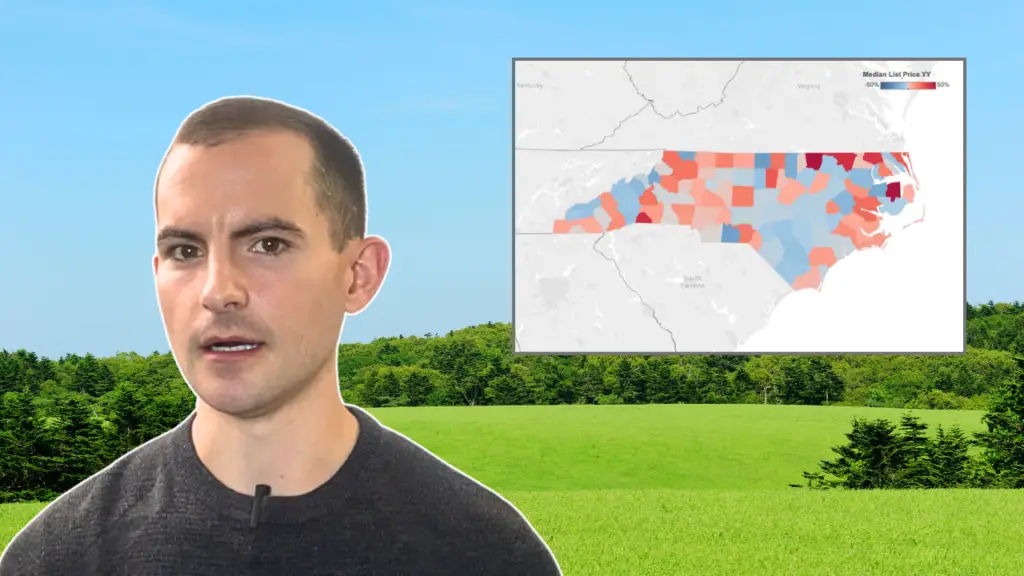Land Sales Secrets Your Real Estate Agent Won’t Tell You
🤫 Don’t Tell Your Agent I’m Telling You This When it comes to selling land there are key insights that real estate agents may not disclose to you, not because they don’t care but because they don’t know. Grasping these insights can make a difference, between a sale and a property listing that expires unsold. Many agents do not possess the expertise needed to assess the value of land, even though they won’t always tell you that. Real estate agents might not openly communicate their uncertainty when it comes to pricing a piece of land. Additionally many agents may not fully comprehend the specific elements that impact land transactions, like zoning regulations, permitted land use and local market dynamics. Some property owners may assume, Oh, I’ll simply have an appraisal done. Yet appraisers misjudge land value way more often than you think. Appraisers might base their assessments on outdated or irrelevant properties resulting in valuations. For example if an appraiser uses a property from a neighborhood with substantially different home values it can greatly impact the appraised value of the land. Photo by Johannes Schenk on Unsplash Understanding the market factors that influence the value of your land is essential through research. Depending solely on an appraisal may not give you a complete picture of its potential. Be ready to dispute valuations by providing your own data and comparisons if needed. 💰 What Will It Actually Sell For? Figuring out how much your land is worth goes beyond checking out appraisals and similar properties. The land market can be fickle, and buyers can be swayed by things like location, accessibility and nearby developments. Unlike houses there aren’t as many sold properties to compare when selling land making the valuation process trickier. Moreover, the value of land is usually connected to its possible applications. For instance a plot of land suitable for residential development will hold a different value compared to land used for commercial purposes. As a property owner it’s essential to evaluate your land’s potential and its alignment with buyers in the local market. Successful land deals require an understanding of what serious buyers are actually willing to pay. Collaborating with real estate professionals who focus on land can offer insights. They can assist you in navigating the intricacies of land pricing and pinpointing the price. Photo by Stephen Dawson on Unsplash In the end grasping the features of your property and the dynamics of the market can pave the way, for a successful sale. Instead of depending solely on third parties to value your proprty, invest some time in assessing your land’s value yourself – and compare your conclusions with theirs. 📏 The “Price Per Acre” Deception A widespread misunderstanding in real estate transactions is the notion that the price per acre serves as a benchmark for valuing land. This perspective oversimplifies the intricacies associated with evaluating land. The size of a property alone doesn’t automatically translate into higher value. Photo by Holly Ro on Unsplash For example two properties could have values that vary greatly even if they have similar sizes. Aspects like location zoning and availability of utilities are crucial in establishing their value. A 10 acre piece of land in a sought after area could be worth much more than a 50 acre lot in a less appealing location. Moreover the availability of utilities can significantly impact property value. A lot equipped with water and sewer connections might command a price that’s much higher than a comparable lot that requires the use of well and septic systems. Prospective buyers tend to favor properties with existing infrastructure nearby as it helps them cut down on expenses. Photo by Francis Ramirez on Unsplash When evaluating a property it’s crucial to consider its features rather than just the size. Aspects like the land layout, soil condition and nearby facilities should impact how you price it. By taking these factors into account you can set a price that accurately reflects the properties value and appeals to potential buyers. 🌟 Why Overpricing Is Often Worse Than Underpricing While it may seem illogical, “underpricing” a property slightly can actually result in quicker sales and potentially higher-priced offers than when you overprice a property and no buyers take it seriously. This approach can backfire causing the property to stay on the market longer and ultimately sell for a lower price because its long duration on market cheapens its perceived value in the minds of active buyers. Photo by Nick Perez on Unsplash By pricing your land at or even a bit lower (0-5%) than its potential value you can spark interest and competition among potential buyers. This approach may result in offers and bidding dynamics that drive up the final sale price beyond your initial listing. The trick lies in setting expectations while maintaining the perception that your property is a fantastic opportunity. A word of caution: it’s not smart to flaunt the fact that you’re looking into multiple offers because serious buyers are not as common as you think and nurturing those relationships with respect is important to your success. Seasoned land agents understand these pricing dynamics well. For instance they may suggest pricing a property that might be worth $100,00 at $99,000 instead, in hopes of greater demand from buyers and a faster, more successful sale. 📊 Conclusion To sell land effectively one must grasp the nuances that impact its worth. By acknowledging the constraints of the average real estate agents and appraisers, landowners can seize control of the selling process to their advantage. Comprehending the market employing pricing strategies and emphasizing the positive features of the property can result in outcomes. Connect with professionals, do your homework and be adaptable when it comes to the sales process. By following the steps you can maximize the perceived value of your property and create a profitable sale. Photo by Austin Distel on Unsplash




